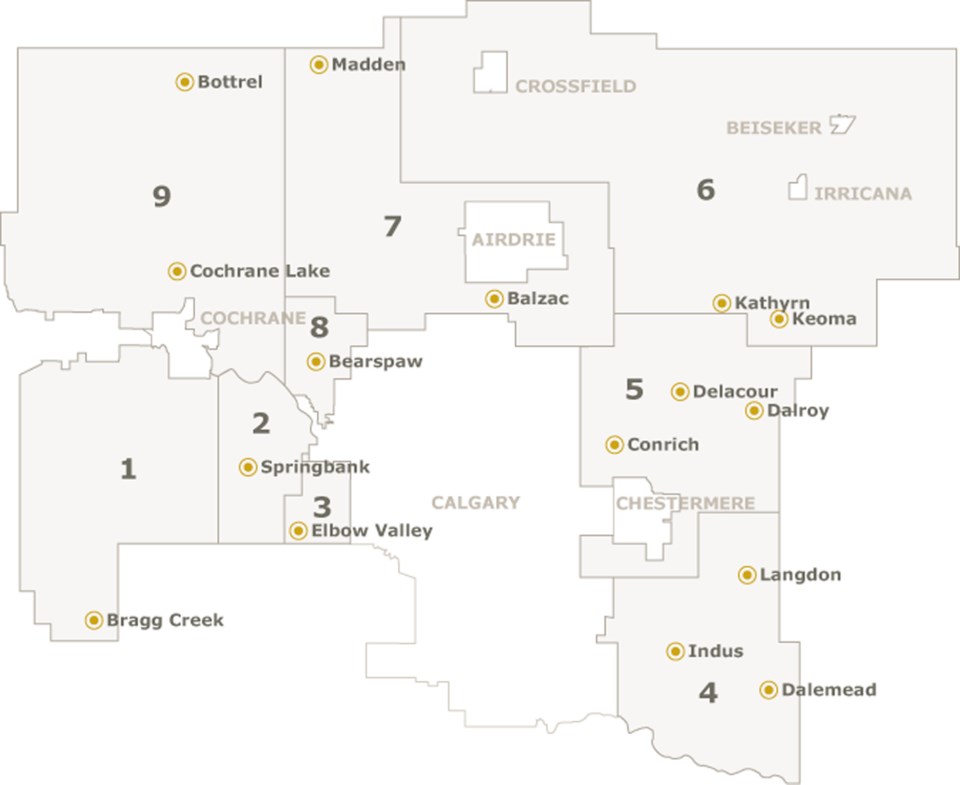Voting boundaries in Rocky View County (RVC) could look different in 2021. Council voted July 9 to direct administration to report back on the cost of hiring an independent consultant to review the municipality’s current electoral boundaries and governance.
“The ultimate objective of reviewing the County’s divisional boundaries is to redistribute RVC’s electorate in time for the next municipal election in 2021,” said Municipal Clerk Charlotte Satink.
The last major electoral boundary review in RVC was done in 2000, according to Satink. Since that time, she said, the County’s total population has increased by 43 per cent. A minor electoral boundary adjustment was made to Divisions 7 and 8 in 2010, Satink added, in accordance with the Bearspaw Area Structure Plan (ASP).
“Since 2010, RVC has gone through four annexations that have affected the County’s electoral boundaries,” she said.
After the previous council was unable to approve new electoral boundaries prior to the 2017 municipal election, Satink said, administration was directed in November 2016 to structure a Terms of Reference to guide the creation of updated boundaries and a new governance structure, and to develop policy that would review the appropriateness of RVC’s boundaries within 24 months of each municipal election.
“Having equal and effective representation is essential to any democratic electoral system,” she said. “Equal representation is the principle that all votes should have equal weight, and therefore, the number of people living in each division should be similar.”
The Electoral Boundary Review Policy, according to Satink, outlines the suggested criteria to guide boundary change options. Population would be the main priority, she said, but future growth, consistency, easily identifiable boundaries, communities of interest and diversity within divisions would also be considered.
Administration recommended an independent consultant be hired to complete the project, as Satink said administration did not have the necessary resources or expertise.
“Using an independent consultant would ensure the process is not influenced by political interests,” she added.
Administration also recommended a review of RVC’s governance structure be included with the electoral boundary review. According to Satink, the County is considered a municipal district (MD) – a type of government formed in the rural areas of the province. Under the Municipal Government Act, the chief elected official of the MD is appointed annually by council from among its ranks. However, council has the option to pass a bylaw where a mayor-at-large is elected by voters for a four-year term.
Of 63 municipal districts in Alberta, only four have an elected mayor-at-large, Satink noted.
Bylaws modifying electoral boundaries or governance must be advertised and passed at least 180 days before the next general municipal election, she added, which gives RVC the deadline of April 22, 2021, to make the changes.
Council voted 8-1 to approve the new policy, and subsequently voted 8-1 to direct administration to prepare a budget adjustment to hire a consultant to conduct the review. Coun. Daniel Henn opposed both motions, saying simply, “I’m of the impression if it ain’t broke, don’t fix it. We have better things to spend our money on.”
“I don’t know how much [a review] is costing,” Coun. Kim McKylor said. “I think we should be prepared and not reactive, otherwise you get pretty skewed numbers right at election time.”
Administration will report back to council on the cost of hiring a consultant by Sept. 30.


